Entering the Japanese Market: Stacking the Deck and Setting Expectations
Last updated: April 09, 2024 Read in fullscreen view
- 07 Jul 2024
 Top Fintech Companies in Vietnam Driving Innovation Across Digital Banking & Investment 28/44
Top Fintech Companies in Vietnam Driving Innovation Across Digital Banking & Investment 28/44 - 18 Oct 2020
 How to use the "Knowns" and "Unknowns" technique to manage assumptions 21/989
How to use the "Knowns" and "Unknowns" technique to manage assumptions 21/989 - 01 Oct 2020
 Fail fast, learn faster with Agile methodology 13/973
Fail fast, learn faster with Agile methodology 13/973 - 01 Nov 2023
 Difference between Vendor and Subcontractor 12/923
Difference between Vendor and Subcontractor 12/923 - 05 Aug 2025
 Why Doesn’t South Korea Outsource Its IT Projects Like Other Developed Countries? 10/83
Why Doesn’t South Korea Outsource Its IT Projects Like Other Developed Countries? 10/83 - 24 Nov 2025
 Top Blockchain Companies in Vietnam 10/27
Top Blockchain Companies in Vietnam 10/27 - 12 Oct 2022
 14 Common Reasons Software Projects Fail (And How To Avoid Them) 10/504
14 Common Reasons Software Projects Fail (And How To Avoid Them) 10/504 - 15 Oct 2022
 Project-based team model for one-off and pilot software development projects 10/730
Project-based team model for one-off and pilot software development projects 10/730 - 03 Oct 2020
 Outsourcing Your MVP Development - Streamlined Solutions for future 9/400
Outsourcing Your MVP Development - Streamlined Solutions for future 9/400 - 19 Oct 2021
 Is gold plating good or bad in project management? 7/754
Is gold plating good or bad in project management? 7/754 - 10 Nov 2022
 Poor Code Indicators and How to Improve Your Code? 7/213
Poor Code Indicators and How to Improve Your Code? 7/213 - 31 Oct 2025
 The True ROI of Software Development Outsourcing for Tech Startups 7/58
The True ROI of Software Development Outsourcing for Tech Startups 7/58 - 21 Aug 2025
 Top 30 Oldest IT Outsourcing Companies in Vietnam 7/89
Top 30 Oldest IT Outsourcing Companies in Vietnam 7/89 - 01 Mar 2023
 Bug Prioritization - What are the 5 levels of priority? 6/207
Bug Prioritization - What are the 5 levels of priority? 6/207 - 22 Mar 2022
 8 Mistakes Marketing Agencies or Consulting Firms Make When Outsourcing Web Development 6/324
8 Mistakes Marketing Agencies or Consulting Firms Make When Outsourcing Web Development 6/324 - 10 May 2021
 Project Audit and Second Opinion Services 6/236
Project Audit and Second Opinion Services 6/236 - 28 Jul 2022
 POC, Prototypes, Pilots and MVP: What Are the Differences? 6/606
POC, Prototypes, Pilots and MVP: What Are the Differences? 6/606 - 06 Feb 2021
 Why fail fast and learn fast? 6/375
Why fail fast and learn fast? 6/375 - 24 Nov 2021
 What is the Actual Cost of Hiring Cheap Developers? 6/348
What is the Actual Cost of Hiring Cheap Developers? 6/348 - 13 Oct 2021
 Outsourcing Software Development: MVP, Proof of Concept (POC) and Prototyping. Which is better? 6/424
Outsourcing Software Development: MVP, Proof of Concept (POC) and Prototyping. Which is better? 6/424 - 05 Mar 2021
 How do you minimize risks when you outsource software development? 5/317
How do you minimize risks when you outsource software development? 5/317 - 12 May 2021
 The Real Cost Between Outsourcing IT vs In-House: A Quick Comparison 5/401
The Real Cost Between Outsourcing IT vs In-House: A Quick Comparison 5/401 - 05 Jan 2022
 What Outsourcing Engagement Model is Right For You? 5/290
What Outsourcing Engagement Model is Right For You? 5/290 - 11 Mar 2023
 Common Pain Points in Software Development Outsourcing 5/227
Common Pain Points in Software Development Outsourcing 5/227 - 31 Aug 2022
 What are the best practices for software contract negotiations? 5/215
What are the best practices for software contract negotiations? 5/215 - 30 Dec 2022
 Top 6 Reasons to Partner with TIGOSOFT 5/234
Top 6 Reasons to Partner with TIGOSOFT 5/234 - 25 Sep 2025
 A Practical Guide to Secure Online Work for Outsourced Teams 5/56
A Practical Guide to Secure Online Work for Outsourced Teams 5/56 - 07 Oct 2025
 Case Study: Using the “Messaging House” Framework to Build a Digital Transformation Roadmap 5/45
Case Study: Using the “Messaging House” Framework to Build a Digital Transformation Roadmap 5/45 - 06 Feb 2024
 What are benefits and drawbacks of co-creating solutions with your clients? 4/216
What are benefits and drawbacks of co-creating solutions with your clients? 4/216 - 12 Dec 2021
 Zero Sum Games Agile vs. Waterfall Project Management Methods 4/374
Zero Sum Games Agile vs. Waterfall Project Management Methods 4/374 - 14 Dec 2021
 The Top 10 Problems with Outsourcing Implementation and How to Solve Them 4/376
The Top 10 Problems with Outsourcing Implementation and How to Solve Them 4/376 - 02 May 2021
 Outsourcing Software Development: Avoid 8 Mistakes 4/89
Outsourcing Software Development: Avoid 8 Mistakes 4/89 - 04 Oct 2022
 Which ERP implementation strategy is right for your business? 4/278
Which ERP implementation strategy is right for your business? 4/278 - 09 Jan 2021
 How can outsourcing enable business agility? 4/178
How can outsourcing enable business agility? 4/178 - 14 Oct 2021
 Advantages and Disadvantages of Time and Material Contract (T&M) 4/789
Advantages and Disadvantages of Time and Material Contract (T&M) 4/789 - 21 Oct 2021
 Advantages and Disadvantages of IT Outsourcing 3/321
Advantages and Disadvantages of IT Outsourcing 3/321 - 18 Jul 2021
 How To Ramp Up An Offshore Software Development Team Quickly 3/516
How To Ramp Up An Offshore Software Development Team Quickly 3/516 - 19 Mar 2021
 Selective Outsourcing of IT Functions - a new trend in business outsourcing 3/495
Selective Outsourcing of IT Functions - a new trend in business outsourcing 3/495 - 08 Oct 2022
 KPI - The New Leadership 3/557
KPI - The New Leadership 3/557 - 31 Oct 2021
 Tips to Fail Fast With Outsourcing 3/375
Tips to Fail Fast With Outsourcing 3/375 - 12 Jan 2023
 Top 10 Trustworthy IT Outsourcing Companies in Vietnam 3/262
Top 10 Trustworthy IT Outsourcing Companies in Vietnam 3/262 - 01 Jan 2023
 Why is Vietnam the Top IT Outsourcing Destination of 2023? 3/202
Why is Vietnam the Top IT Outsourcing Destination of 2023? 3/202 - 01 Jan 2023
 4 New IT Outsourcing Pricing Models to consider in 2023 3/323
4 New IT Outsourcing Pricing Models to consider in 2023 3/323 - 16 Dec 2021
 Why outsource Python development of your project? 3/444
Why outsource Python development of your project? 3/444 - 18 Aug 2022
 What are the consequences of poor requirements with software development projects? 3/242
What are the consequences of poor requirements with software development projects? 3/242 - 07 Nov 2024
 Outsourcing Crisis Looming: Will Trump's Policies Transform the Global IT Landscape? 3/157
Outsourcing Crisis Looming: Will Trump's Policies Transform the Global IT Landscape? 3/157 - 05 Sep 2023
 The Cold Start Problem: How to Start and Scale Network Effects 3/167
The Cold Start Problem: How to Start and Scale Network Effects 3/167 - 01 Jan 2024
 Tech Partnerships: Choosing the Right Software Outsourcing Firm in Vietnam 3/165
Tech Partnerships: Choosing the Right Software Outsourcing Firm in Vietnam 3/165 - 08 Oct 2024
 Vietnam: The Rising Star in Global Outsourcing – Trends and Costs for 2025 3/289
Vietnam: The Rising Star in Global Outsourcing – Trends and Costs for 2025 3/289 - 01 Dec 2023
 Laws of Project Management 3/249
Laws of Project Management 3/249 - 01 Jan 2024
 12 reasons for software development outsourcing 3/146
12 reasons for software development outsourcing 3/146 - 01 Jan 2024
 Software Outsourcing Questions for 2024 3/145
Software Outsourcing Questions for 2024 3/145 - 10 Dec 2023
 Pain points of User Acceptance Testing (UAT) 2/416
Pain points of User Acceptance Testing (UAT) 2/416 - 03 Nov 2021
 7 phases of Odoo Implementation and Development: Can they be outsourced? 2/357
7 phases of Odoo Implementation and Development: Can they be outsourced? 2/357 - 21 Oct 2022
 Outsourcing Billable Rate 2/244
Outsourcing Billable Rate 2/244 - 01 May 2024
 Warren Buffett’s Golden Rule for Digital Transformation: Avoiding Tech Overload 2/188
Warren Buffett’s Golden Rule for Digital Transformation: Avoiding Tech Overload 2/188 - 01 Sep 2019
 Outsourcing Software To Vietnam: Facts, benefits and limitations 2/392
Outsourcing Software To Vietnam: Facts, benefits and limitations 2/392 - 08 Feb 2022
 Software Development: Fixed Cost or Opportunity Cost? 2/444
Software Development: Fixed Cost or Opportunity Cost? 2/444 - 01 Oct 2022
 Vietnam is a favorite supply of IT outsourcing services to Japan 2/230
Vietnam is a favorite supply of IT outsourcing services to Japan 2/230 - 06 Oct 2021
 Intellectual property issues with outsourcing software development 2/364
Intellectual property issues with outsourcing software development 2/364 - 01 Jan 2023
 Software Development Outsourcing Trends to Watch Out for in 2023 2/268
Software Development Outsourcing Trends to Watch Out for in 2023 2/268 - 04 Jan 2021
 VIETNAM AS A BIG ATTRACTIVE DESTINATION IN THE FIELD OF OUTSOURCING 2/276
VIETNAM AS A BIG ATTRACTIVE DESTINATION IN THE FIELD OF OUTSOURCING 2/276 - 17 Feb 2022
 Prioritizing Software Requirements with Kano Analysis 2/280
Prioritizing Software Requirements with Kano Analysis 2/280 - 23 Sep 2021
 INFOGRAPHIC: Top 9 Software Outsourcing Mistakes 2/411
INFOGRAPHIC: Top 9 Software Outsourcing Mistakes 2/411 - 10 May 2021
 What are things you should look for in a good IT outsourcing company? 2/405
What are things you should look for in a good IT outsourcing company? 2/405 - 13 Dec 2020
 Move fast, fail fast, fail-safe 2/292
Move fast, fail fast, fail-safe 2/292 - 28 Dec 2021
 8 types of pricing models in software development outsourcing 2/417
8 types of pricing models in software development outsourcing 2/417 - 28 Oct 2022
 Build Operate Transfer (B.O.T) Model in Software Outsourcing 2/361
Build Operate Transfer (B.O.T) Model in Software Outsourcing 2/361 - 28 Oct 2022
 Expect the unexpected in 2023 - How Outsourcing Can Help? 2/184
Expect the unexpected in 2023 - How Outsourcing Can Help? 2/184 - 04 Oct 2021
 Product Validation: The Key to Developing the Best Product Possible 2/295
Product Validation: The Key to Developing the Best Product Possible 2/295 - 17 Oct 2020
 How Outsourcing can Improve Time Management for Better Business 2/184
How Outsourcing can Improve Time Management for Better Business 2/184 - 19 Apr 2021
 7 Most Common Time-Wasters For Software Development 1/525
7 Most Common Time-Wasters For Software Development 1/525 - 13 Oct 2021
 Why Outsourcing Software Development Services Is Gaining Traction With Non-Technical Leaders? 1/299
Why Outsourcing Software Development Services Is Gaining Traction With Non-Technical Leaders? 1/299 - 08 Aug 2021
 Why Nearshore Software Development is better than In-House Development? 1/174
Why Nearshore Software Development is better than In-House Development? 1/174 - 13 Jan 2023
 What are the Hourly Rates in Offshore Software Development? 1/223
What are the Hourly Rates in Offshore Software Development? 1/223 - 03 Jan 2023
 IT Outsourcing Costs: Is outsourcing really cost-effective? 1/185
IT Outsourcing Costs: Is outsourcing really cost-effective? 1/185 - 02 Mar 2021
 Estimate the Cost of Software Development 1/312
Estimate the Cost of Software Development 1/312 - 01 Mar 2022
 Top 5 reasons why outsourcing to Vietnam is a smart move 1/262
Top 5 reasons why outsourcing to Vietnam is a smart move 1/262 - 01 Apr 2021
 IT Outsourcing to vietnam: Why It Is A Good Choice? 1/258
IT Outsourcing to vietnam: Why It Is A Good Choice? 1/258 - 31 Dec 2021
 Outsourcing Software Development to mitigate the impact of COVID-19 1/289
Outsourcing Software Development to mitigate the impact of COVID-19 1/289 - 21 Aug 2022
 Forbes: IT Outsourcing Hotspot: Vietnam, A Small But Mighty Powerhouse 1/240
Forbes: IT Outsourcing Hotspot: Vietnam, A Small But Mighty Powerhouse 1/240 - 09 Sep 2022
 Close Collaboration and Communication Can Overcome the Challenges of Distributed Teams 1/129
Close Collaboration and Communication Can Overcome the Challenges of Distributed Teams 1/129 - 15 Aug 2021
 TIGO Rate Formula - Things the partners should know 1/418
TIGO Rate Formula - Things the partners should know 1/418 - 11 Mar 2024
 Why You Should Hire Odoo Developers from Vietnam to Customize Your ERP System 1/89
Why You Should Hire Odoo Developers from Vietnam to Customize Your ERP System 1/89 - 01 Jun 2025
 10 Sustainable & Unique IT Outsourcing Companies in Vietnam 1/58
10 Sustainable & Unique IT Outsourcing Companies in Vietnam 1/58 - 04 Apr 2024
 Unlock Vietnamese-Japanese outsourcing potential 1/214
Unlock Vietnamese-Japanese outsourcing potential 1/214 - 01 Jan 2024
 Hiring Tech Talents in Asia: An Overview of Skills, Costs, and Potential 1/148
Hiring Tech Talents in Asia: An Overview of Skills, Costs, and Potential 1/148 - 11 Jan 2024
 What are the Benefits and Limitations of Augmented Intelligence? 1/434
What are the Benefits and Limitations of Augmented Intelligence? 1/434 - 01 Jan 2024
 What The World Is Flat Means to IT Outsourcing 1/157
What The World Is Flat Means to IT Outsourcing 1/157 - 02 Nov 2023
 What are the pros and cons of iIT outsourcing? 1/184
What are the pros and cons of iIT outsourcing? 1/184 - 01 May 2023
 Streamline Your Business with Outsourcing 1/168
Streamline Your Business with Outsourcing 1/168 - 17 Jan 2024
 What are the benefits and challenges of using multi-sourcing or single-sourcing strategies? 1/157
What are the benefits and challenges of using multi-sourcing or single-sourcing strategies? 1/157 - 10 Jan 2024
 Facts Chart: Reasons for outsourcing 1/132
Facts Chart: Reasons for outsourcing 1/132 - 26 Dec 2023
 Improving Meeting Effectiveness Through the Six Thinking Hats 1/205
Improving Meeting Effectiveness Through the Six Thinking Hats 1/205 - 05 Jan 2024
 Easy ASANA tips & tricks for you and your team 1/180
Easy ASANA tips & tricks for you and your team 1/180 - 12 Aug 2024
 Understanding Google Analytics in Mumbai: A Beginner's Guide 1/84
Understanding Google Analytics in Mumbai: A Beginner's Guide 1/84 - 01 Jan 2023
 Top Software Development Challenges in 2023 /275
Top Software Development Challenges in 2023 /275 - 08 Jan 2024
 Outsourcing on an As-Needed Basis /144
Outsourcing on an As-Needed Basis /144 - 12 Mar 2024
 How do you create FOMO in software prospects? /127
How do you create FOMO in software prospects? /127 - 01 Feb 2023
 [InfoWorld] Is your outsourcer agile enough? /182
[InfoWorld] Is your outsourcer agile enough? /182 - 14 Mar 2024
 Why should you opt for software localization from a professional agency? /117
Why should you opt for software localization from a professional agency? /117 - 06 Mar 2024
 [SemRush] What Are LSI Keywords & Why They Don‘t Matter /131
[SemRush] What Are LSI Keywords & Why They Don‘t Matter /131 - 25 Nov 2021
 Low-Cost Software Development: Buy Nice or Buy Twice? /278
Low-Cost Software Development: Buy Nice or Buy Twice? /278 - 10 Mar 2021
 The 7 Biggest Mistakes to Avoid Before Outsourcing a Web Development Project /224
The 7 Biggest Mistakes to Avoid Before Outsourcing a Web Development Project /224 - 15 Nov 2023
 IT Staff Augmentation Types and the Best Choice for Your Business /155
IT Staff Augmentation Types and the Best Choice for Your Business /155 - 01 Jan 2023
 Top 5 IT outsourcing countries in 2023 /254
Top 5 IT outsourcing countries in 2023 /254 - 16 Mar 2021
 Outsource Data Engineering Services - TIGO Streamlined Solutions /234
Outsource Data Engineering Services - TIGO Streamlined Solutions /234 - 03 Nov 2022
 Top questions and answers you must know before ask for software outsourcing /264
Top questions and answers you must know before ask for software outsourcing /264 - 06 Nov 2019
 How to Access Software Project Size? /236
How to Access Software Project Size? /236 - 19 Oct 2020
 The hidden costs of outsourcing software development /434
The hidden costs of outsourcing software development /434 - 19 Oct 2021
 Software development life cycles /628
Software development life cycles /628 - 12 Oct 2021
 Vietnam outsourcing path - the silk road connecting ASEAN with the developed countries (EU, US, Japan...) /282
Vietnam outsourcing path - the silk road connecting ASEAN with the developed countries (EU, US, Japan...) /282
Japan, believe it or not, is an amazing market for software companies. It’s the 3rd largest economy and 2nd largest IT market in the world; it’s also the largest SaaS / Cloud market in Asia. Despite whatever you may have heard about Japan’s closed Japanese business culture, it’s warming up quickly to non-Japanese companies for a variety of reasons. In other words, there’s never been a better time to be a software startup trying to move into Japan.
We’ve written a lot about misconceptions surrounding Japanese business culture, from overblowing the importance of business cards, to the notion that a foreign company will be successful only if they go through a distributor already embedded in Japanese businesses. And just like any other culturally-enmeshed aspects of business in Japan, sales is also often mistaken for having an impenetrable cultural moat foreigners just won’t be able to break through.
While there are culture-specific nuances to selling and gaining traction in any culture, I believe these are just nuances, and sometimes obstacles, but never mysterious nor impossible to bridge. However, you do need to be aware of them, and actively work with how things work in Japan if you’re to succeed in expanding your operations to Japan.
Setting Expectations with HQ
If you’re reading this, I’m going to assume that you’re not going to be the person selling directly to Japanese corporations. You’ll most likely be hiring a team in Japan (or a handful of Japanese professionals where you are) down the line to handle day-to-day Japan operations.
So, no matter how much we talk about how to enter, and sell in, Japan, a lot of the tactics are moot if you personally won’t be able to execute on them.
What I’ve found is that many representative directors in Japan managing the office, and Japan teams in general tend to have a hard time convincing management back at HQ of the differences between the Japanese market and that in the US, especially for executives expanding operations to Japan for the first time.
Instead of talking about specific sales tactics, what I’d like to focus on here is the expectations you should have, and how to make sure you can reconcile what you expect from your US team v. your Japan team.
What Types of Companies Lend Itself Well to Japan Market Expansion?
While Japan is a great market for software companies, there are a few factors that can make it easier or harder to enter Japan. As you start thinking about moving to Japan, being able to take a pulse of the Japanese market without diving straight in is invaluable. But how do you do that? If your company has these following traits, you might be able to test the waters with a few early-stage customers in Japan.
Developer-Centric vs. Business User-Centric Software
I’m defining “developer-centric software” as those sold to IT and developers, and used primarily for building (or helping build) something technical. These include, but are not limited to DevOps tools (CI/CD, testing tools, etc.), developer tools (SDKs, identity management tools, etc.), business intelligence tools, databases, etc.
Business user-centric software, on the other hand, are those sold to non-technical users, for non-technical functions. This could be HR and payroll solutions, expense management tools, digital advertisement solutions, and content management tools.
Between these two, developer-centric tools may be easier to sell into Japan, at least initially, compared to business user-centric tools because developers are much more used to dealing with software with incomplete support. A lack of product localization, a small Japanese community, and very little Japanese documentation are par for the course when using non-Japanese software. Japanese developers have gone through this cycle time and time again as new tools and methods crop up outside of Japan, and they are relatively independent and unbiased in their evaluation of tools. These factors make it easy to measure Japan expansion viability through initial organic adoption without much upfront work (think GitHub and their organic growth in registered users in Japan), though organizations will have to have a Japan support strategy in the long-run (again, think of GitHub as they start selling enterprise licenses).
Individual licenses v. enterprise licenses
Simply put, it’s much easier to convince one person to sign up for a freemium service or purchase one software license compared to going through a POC cycle and having to convince a room full of decision makers. Of course, companies will still have to eventually figure out how to sell into larger accounts more efficiently, but getting 100 users who signed themselves up is much more cost effective than having to hire a sales team first.
Self-service v. professional services
This is no different than in the US, but software that is completely self-service, from signing up to implementing and operating the tool, can garner a significantly higher number of users (revenue notwithstanding) than those requiring professional services support.
Exceptions
These three factors are just a few ways to start asking about an organization’s Japan expansion viability. But by no means does this mean that a business user-centric tool on an enterprise sales cycle with heavy professional services for onboarding cannot expand into Japan. In fact, Salesforce and Oracle are two great examples of companies that have been extremely successful in Japan that exhibit exactly the traits that may have made initial expansion difficult.
For better or worse, understanding these factors can be a way to tally up the market opportunity and start with incremental steps to increasing market share in Japan, rather than jumping straight into opening up an office.
Moving In, and Moving Up
Once you’ve decided Japan possesses the qualities of an attractive overseas market, you will most likely kick off a project to incorporate in Japan, and find a representative director (also commonly known as country managers).
The good news is that these people know Japanese business like the back of their hands. The bad news is that it’s going to be difficult for you, a non-Japanese person, to fully appreciate what the team in Tokyo are working through because you don’t have experience in Japan. This means that you might set unreasonable standards without adequate HQ support, or conversely, not know exactly when to push back on your Japan team’s input.
In order to close the gap between your expectations and the unknown (to you) reality, we’re going to lay out what to expect during the sales process, along with a few dos and don’ts.
1. Qualify, always
This seems obvious, but your team in Japan may be reluctant to ask qualifying questions upfront, thinking that it’d be impolite to start asking questions about their business and pain points over email before meeting the prospect. Many of them will want to go onsite, exchange business cards, and go through a company overview deck before asking questions.
- Do push hard on your team to qualify, even if it’s a few high-level questions. Given most meetings take place in-person, going to a meeting without any upfront information means wasting almost 2 hours of each attendee’s time. Come up with a few qualification questions, and make them into a template they can easily paste into their email while scheduling the meeting.
- Don’t just agree to the pushback that asking these questions are impolite. You won’t lose any prospects just because you asked a few questions, and the worst they can respond with is a “let’s chat about it in person.” In fact, asking pointed questions upfront can signal a level of expertise to the prospect, and can lead to them trusting you more than just walking into a room to run through a dry presentation.
2. Always Assume In-Person Meetings for Introductions
American executives generally don’t realize how ingrained on-site introduction meetings are in Japan. Especially in Tokyo, where you can get anywhere within 30 mins via the well-oiled machine that is the Tokyo subway system, the expectation is that your team will visit each and every prospect for meetings.
- Do accept this as a fact and a cost of doing business in Japan. Yes, meetings will take twice as much time considering the amount of time it takes to get to the prospects’ offices, but you’re not going to go far if you try to overturn this long-standing piece of business culture.
- Do make sure your sales teams are qualifying these prospects before jumping head-first into an intro meeting (refer to the point above).
- Do try to find other meetings that could be done online, like POC check-in meetings, and second, or third meetings without executives involved. Your sales team can always say that they’re going to be traveling around that time, and can only chat over video conference. Of course, this isn’t going to work for negotiations and other important presentations.
3. Clarify POC Objectives or Get Into a 2-Year POC Time Sucker
As your sales team walks prospects through their products and services, the topic of running a free POC will inevitably come up. The only problem is that they’ll speak to a larger number of people than you’re used to back in the US, and none of them have decision-making authority. The Japanese sales person, thinking running a trial is the right way to get the attention of higher-ups, agrees to a free trial, but isn’t able to get information on their budget cycle, and who will be signing the dotted line (and it’ll most likely require multiple people approving the project). A few months of hands-on support from your organization, and the prospect comes back with new requirements, a request for a second round of evaluations, and a longer than expected timeline.
POC: A proof of concept is typically used to test the core features, usability, and overall viability of a product idea at different times during the development lifecycle. It's a way of verifying a product can work as intended and has the potential to address a specific need.
- Do make sure there’s a clear POC objective and a path to final approval. Japanese organizations are group consensus-oriented, which makes finding the one decision maker almost impossible (in fact, there are usually many people who have to sign off). Going into a trial with out either of these will guarantee a long-term cycle of multiple trials as new decision makers and goals crop up, along with egregious scope creep.
- Do make sure you know their fiscal calendar with budget cycles. Because Japanese organizations go through a round of reorganizations every year, the trial you’re currently working on may mean close to nothing once your champion leaves their post and is replaced by somebody completely unfamiliar with the project, along with new corporate goals that can easily shift the importance of your POC. Also, there’s very little point in running a trial right away if they have to wait 3 quarters to even submit new budget / project requests to consider purchasing your software (happens all too often).
4. Negotiation
Aside from asking for discounts, I’ve experienced very few instances of Japanese prospects negotiate hard on contracts. From what I know (and that’s just a drop in the bucket compared to all sales cycles in Japan), Japanese prospects are pretty straight forward and honest about their needs and requests. A lot of who I worked with collaborated on coming up with a fair price and licensing structure without playing hard-to-get or any of the games we’re used to seeing back in the US. That’s not to say you won’t get some prospects who aren’t as forthcoming, but on the hole, Japan is a very easy place to come to an agreement on pricing.
Frequently Asked Questions
What is the best market entry strategy for Japan?
Why is Japan a good market to enter?
How is business different in Japan?
What is the Japanese style of meeting?
What is the single most important concept in Japanese management?
Kaizen: Understanding the Japanese Business Philosophy
Kaizen is a Japanese business philosophy that focuses on gradually improving productivity and making a work environment more efficient. Kaizen supports change from any employee at any time. Kaizen translates to change for the better or continuous improvement.
What are the advantages of Japan's market economy?
High rates of investment in productive plant and equipment. The application of efficient industrial techniques. A high standard of education. Good relations between labour and management.










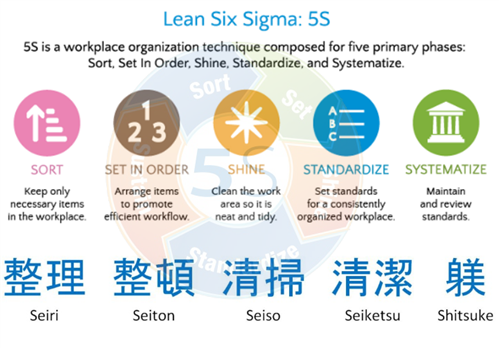

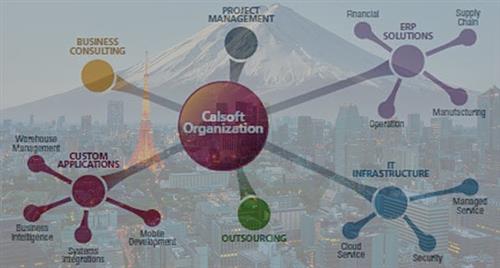


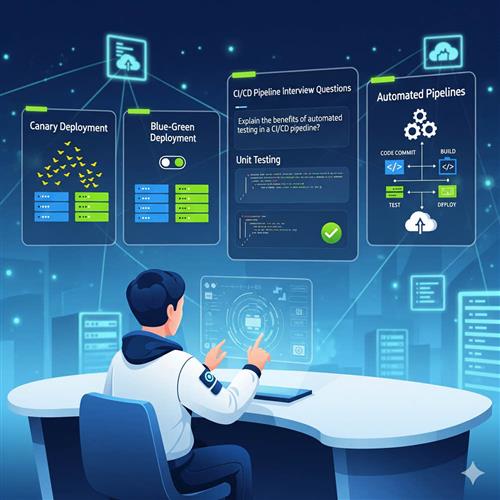


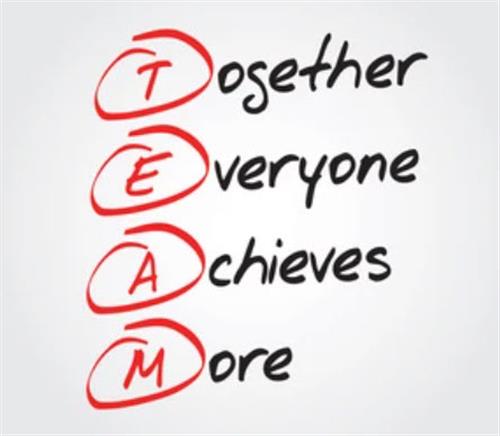
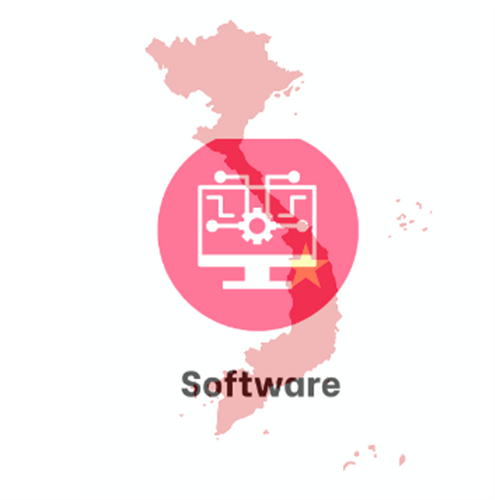
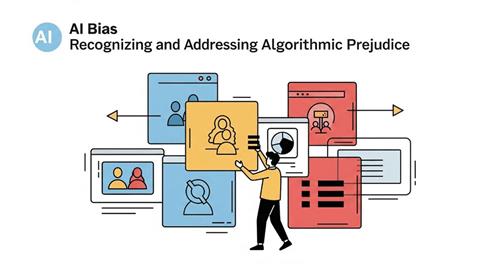
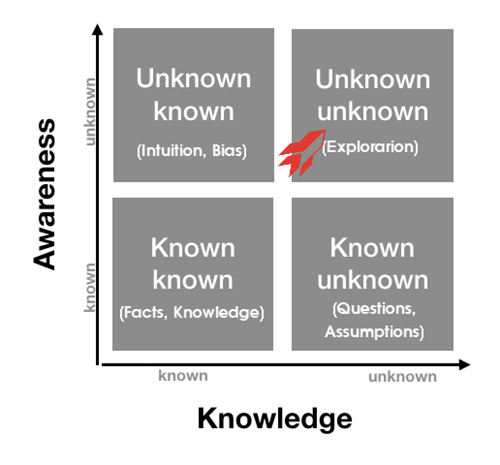
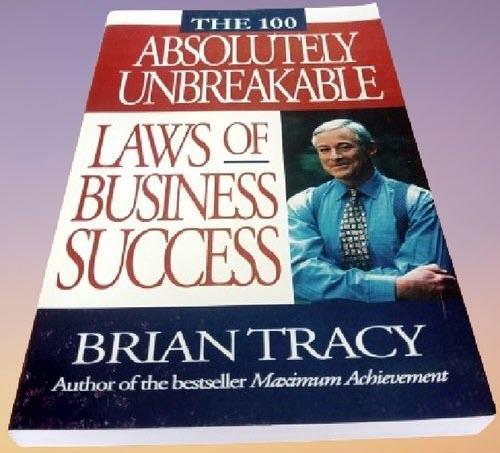


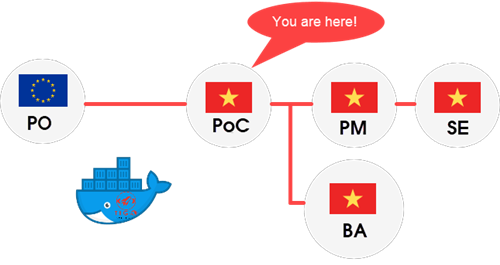









 Link copied!
Link copied!